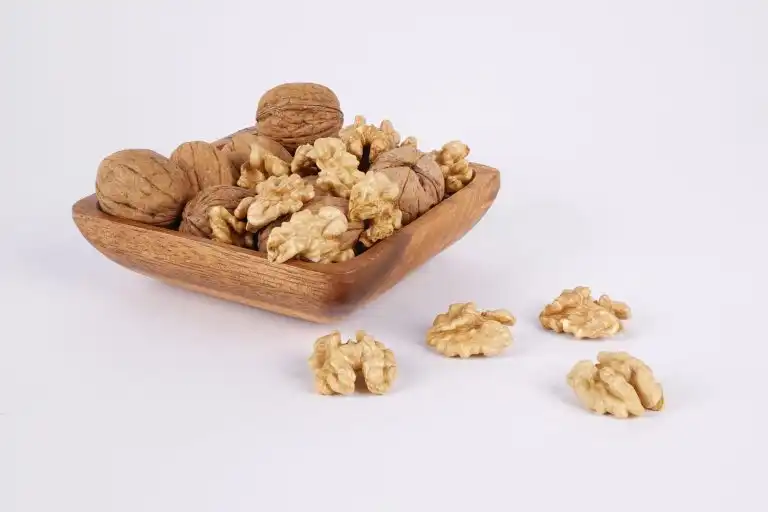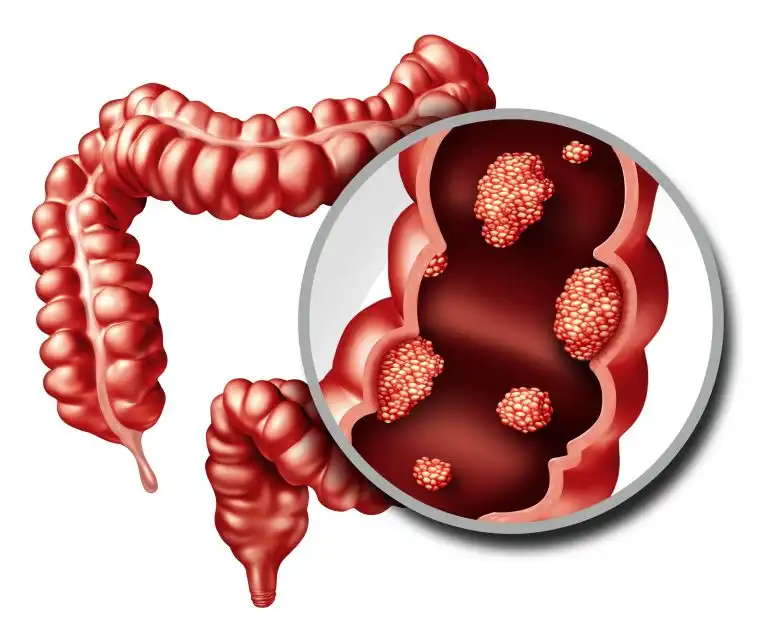12 Benefits of Gardening on Health

Many people take pride in their gardens. Gardening is not only enjoying the smell of fresh flowers but can also be an effective way to improve your health. Gardening be an effective form of workout, but it can also benefit your mental health too. Spending time outside can help reduce depression, anger and stress. Furthermore, gardening is good for you as it can help reduce the risk of diseases such as stroke and osteoporosis as well as improving your immune system. 1. Reduced risk of stroke According to research gardening can help reduce the risk of a heart attack or stroke. When looking at the age group 60+ gardening can help prolong life by up to as much as 30%. 2. Burns calories Gardening can be a hard workout, depending on what you do and for how long. A simple 1 hour of gardening could help you to burn up to 330 calories. Also, if you garden for three to four hours, you could easily burn as many calories as you would from one hour in the gym. 3. Stress relief Gardening as a form of exercise can be good for you as it helps to release endorphins, the hormone that helps to make people feel satisfied and relaxed. Furthermore, being outside in direct contact with the sunlight could help improve your mood. Stress hormone in your brain called cortisol could be reduced through gardening. 4. Improved immune system Exposure to the sun through gardening can help you absorb plenty of vitamin D. In short, Vitamin D can help your body to absorb calcium, which in turn, can help keep your bones strong and your immune system healthy. Spending more time outside and under the sun helps increase the levels of Vitamin D in your body. In return, it enables you to absorb more calcium, which makes the bones stronger and the immune system healthier. 5. Responsibility Gardening activities provide purpose and a sense of worth. Having a hobby or a profession like gardening makes you feel responsible as you have to make things grow and you automatically feel responsible for the plants. 6. Live in present Being outside in your garden and experiencing the change of seasons as and when they happen can help you feel connected to the world. Therefore spending the time outside and experiencing the flowers as they bloom can be a great way to keep track of time. 7. Getting rid of negative thoughts If you have experienced a bad day simply grabbing a shovel and doing some heavy digging or drastic pruning could be a great way to rid of your built up of negative feelings. Distracting yourself from your life’s stress through gardening is an excellent technique because this activity is connected to growth and renewal. Your plants will swamp your garden space if you don’t cut them so mow them down whenever you feel troubled. 8. Increasing the senses Spending time in the garden is a great way to enhance your sensory system. With all the different smells, colours and textures of plants around you can easily make the most of your body’s abilities. T 9. Growing fruit and vegetables Growing fruit and vegetables in your owngarden can be good for you as you can include your produce in your diet 10. Decreases osteoporisis Osteoporosis is a disease that can weaken bones and therefore increases the likelihood of a broken bone. Therefore, by regularly gardening you will take part in repetitive tasks that can ensure all the major muscle groups are getting a good workout. This can help decrease the risk of osteoporosis. 11. Reduced risk of dement Engaging in a physical activity such as gardening can help lower the risk of developing dementia. 12. Attaining Spirituality Gardening can help enter a zone of peace and you can be in oneness with nature . Similar to what an athlete will enter before and during a competition, or the mood you enter during yoga or medita From health-related benefits GARDEDNING can help reduce the risk of a heart attack to helping you relax after a stressful .
Baby born to COVID positive mother in Wockhardt Hospitals, Mira Road tests negative

A 27-year-old pregnant woman from Mira Road, who tested positive for Covid-19, delivered a healthy baby girl at Wockhardt Hospitals. The newborn tested negative for the coronavirus and has been kept separate from her mother, who is in the isolation ward. “My team took special precautions to see that the baby girl does not come in contact with her mother, and the child was fed with special milk supplements,” said Dr Mangala Patil, obstetrician and gynaecologist at the hospital. After completing 39 weeks of pregnancy, as per the protocol, the woman got tested for Covid-19 on May 31, and on June 2 her results came back positive. She and her husband, who tested negative, were home quarantined since 26 May and were being provided food by their neighbours. “On June 3, the woman was admitted to the hospital and the baby was delivered through a Caesarean section,” said Dr Patil. “The baby’s Covid-19 test came back negative and within the next two days, the mother will be tested again. If the result turns out to be negative, then the mother and baby will be discharged,” she said. Source: https://www.hindustantimes.com/cities/baby-born-to-covid-positive-mother-in-mira-road-tests-negative/story-zf3XGqmXAf8Az7tZoTvtzI.html
Breathing exercises to elevate your Mind

The following yogic breathing exercises to improve your mood will consciously change/control the breath and to make our mind steady, focused and peaceful. 1. Shapes Breath Sitting in front of one another, one partner guides the other’s breathing by asking them to follow the movements of their hand with their breath. When she raises her hand upward (slowly), it means inhale; when she moves her hand horizontally, it means hold the breath; and when she moves her hand downward, it means exhale. The leading partner can draw an imaginary square with their hand causing their partner to inhale, hold the breath, exhale, hold the breath etc. in a rhythmic way. If you do it for a minute or two, you will feel deeply relaxed. Try with different shapes such as lines, triangles, stairs and circles. Switch roles when ready. The teacher or a student can also lead the whole group in this exercise. 2. Counting the Breath Sit up tall, and as you inhale and exhale, count your breath. It’s hard to count aloud and breathe at the same time, so count using your fingers or have the teacher count aloud for everyone. You can practice any of the following breathing rhythms or invent new ones: · Inhale 5, exhale 5 · Inhale 4, exhale 8 · Inhale 4, hold the breath for 4, exhale 4 3. Diving Breath Stand at one end of the room and take a deep breath. Hold the air in and ‘dive’ under the water, walking and making swimming motions with your arms, hold your breath until you reach the other side of the room. 4. Alternate Nostril Breathing According to yoga, this change between the two nostrils helps to keep the balance in our body. The right nostril, connected to the left-brain, is considered to carry the sun energy; the masculine energy. The left nostril, connected to the right-brain, harnesses the moon energy; the feminine energy. When we breathe through only one nostril for a long time, an imbalance is created and we start feeling either more nervous and angry (if the right nostril is dominant), or more anxious and afraid (if the left nostril is dominant). This exercise is like preventative medicine because it helps to keep a regular and harmonious flow between the two nostrils. To do the full exercise: 1. Sit up tall and, using your right thumb, block your right nostril. Inhale slowly and deeply through your left nostril. 2. Close both nostrils using your right thumb and index finger and hold your breath for a few seconds or for as long as comfortable. 3. Open your right nostril, keeping your left nostril closed with your index finger, and exhale slowly and fully. 4. Inhale through your right nostril slowly and deeply. 5. Close both nostrils and hold your breath for as long as comfortable. 6. Open your left nostril, keeping your right nostril closed with your thumb, and exhale slowly. This is one round. 7. Practice 3-5 rounds. If holding the breath is too difficult for the children, skip stages 2 and 5. 5. Prana Breath Our breath is fundamentally connected to our bodies and our minds. Children breathe and don’t even realize that they are doing it! This exercise helps them become aware of their breath; that it is constantly moving and that no two moments are the same. ‘Prana’ means vital force. We cannot live without our breath; to live is to breathe and to breathe is to live. 6. Bellows Breath This breath is especially good for depression. The subjective experience is one of mild elation, followed by a feeling of relaxation. During practice, the sympathetic nervous system is briefly stimulated. However, following practice, the parasympathetic system is awakened. Blood pressure and heart rate usually drop to or below the resting rate, and the autonomic nervous system comes back into balance. Source: https://www.doyou.com/5-breathing-exercises-to-improve-your-mood-and-state-of-mind-56061/
Harmful effects of Passive Smoking

Passive smoke is the combination of smoke from a burning cigarette and smoke exhaled by a smoker. There are two types of passive smoke; side stream smoke comes directly from the burning tobacco product, and mainstream smoke is the smoke that the smoker inhales. The smoke that burns off the end of a cigarette or cigar actually contains more harmful substances than the smoke inhaled by the smoker, as there is no filter it must pass through. If you are a non-smoker but are exposed to passive smoke on a regular basis, your body will still absorb nicotine and other harmful substances. Smoke contains more than 4000 chemical compounds, of which 250 are toxic and more than 50 are known cancer-causing agents. These dangerous substances linger in the air for approximately 4 hours and breathing in these particles for only minutes can harm you. Exposure time to passive smoke and its effects: 5 MINS of exposure can stiffen the aorta as much as smoking a cigarette 20-30 minutes – causes excess blood clotting, as well as increases the buildup of fat deposits in blood vessels, increasing the risk of heart attack and stroke. · 2 hours – increases the chance of irregular heart beat (arrhythmia) and can trigger a fatal cardiac event or heart attack. Diseases that arise: · Lung cancer and lung disease, including COPD, emphysema, asthma, and chronic bronchitis. Nonsmokers who live with a smoker have a 20% to 30% increased risk for developing lung cancer. · Heart disease · Eye and nasal irritation; increased risk of sinus and respiratory infections Population greatest risk of being harmed by passive smoking: Although any person who spends time around those who smoke has an increased chance of developing a smoking-related illness, certain people are extremely susceptible to the harmful effects of passive smoke. These include: 1)Service industry workers, such as bartenders and restaurant servers. 2)Pregnant women. Passive-smoke harms not only the mother-to-be, but her unborn child as well. 3)Infants and children (and pets!). Infants and children who are regularly exposed to passive smoke have an increased chance of developing the following conditions: Preventive Measures against passive smoking:
Benefits Of Walnuts in Diet

Nuts are considered to be one of the simplest healthy food to eat as they can be easily found in nature. They contain almost all kinds of vitamins, minerals, proteins and healthy fats that are sometimes not found in one source of food alone. Walnut is a health booster because it can provide your body’s needs even in very little doses. Walnuts are seeds that came from the trees of Juglans genus. Walnut seed has an incredible amount of nutrients such as proteins, carbohydrates, minerals, and essential fatty acids. A consumption of walnuts promotes brain function thanks to its omega 3 fatty acids that help increase the activity of the brain. Walnuts are not just a great antioxidant and a high protein source, it also has a delicious nutty taste that people enjoy. They are perfect to be included in a diet because they’re an awesome food supplement too. With the many health benefits, Walnut offers, it’s just fair for us to call a super food. Understand Benefits Of Walnuts in Diet 1) Healthy for heart It’s advisable for people with heart disease or those who have a high risk of having heart problems because of multiple cardiac risk factors, to eat walnuts because it contains amino acid I-arginine that offers vascular benefits to the heart. Walnuts are also anti-inflammatory and prevent pathological blood clots as it has the plant-based omega 3 far alpha-linolenic acid (ALA). 2) Cancer Prevention: Properties found in Walnuts has the capacity to control the growth of cancer cells in the body. 3) Healthy Skin: Walnuts are rich in gamma-tocopherol, a great source of Vitamin E which is a strong lipid-soluble antioxidant. It protects the skin from harmful free radicals present in nature. In addition to this, Walnuts also contains B-complex vitamins like folate, niacin, riboflavin and Vitamin B-6. 4) Improves Sleep. If you’re having trouble sleeping, have some Walnuts before sleeping. You can have them as a snack or mix it with your salad. They are a great source of melatonin, a hormone that promotes a good sleep at night. 5) Increases Brain thinking. The neuroprotective compounds found in Walnuts such as Vitamin E, folate, melatonin, omega-3 fats, and antioxidants support brain health and increases analytical reasoning in young adults. 6) Controls Diabetes. People with Diabetes can enjoy eating Walnuts without having worry about gaining significant weight since they contain a huge amount of polyunsaturated and monounsaturated fats. It improves the metabolic parameters in people with type 2 diabetes. One-quarter cup of Walnuts every day can already control insulin levels in such cases.
Emergency case of Colon Cancer handled well during Lockdown by Wockhardt Hospitals

In this lockdown time when everyone avoiding going out specially to hospitals. But some diseases really can not wait. Colon cancer is one such disease. 62 years male with DM , presented to emergency department of Wockhradt hospitals with severe abdominal pain and vommiting. On Immediate CT scan it was found to perforated Appendix with mass formation. Knowing this as surgical emergency, Dr Imran Shaikh ( consultant Surgical Gastro and GI Oncosurgery) patient was immediately taken to for laparoscopic surgery. Appendix was removed and all infection were drained. Patient recovered immediately in 3 days and discharged. After 7 days when his appendix Histopathology report came , it showed Mucinous type of cancer. It is extremely rare to have appendix cancer ( less than 1 %) and considering its type and acute presentation it is rarest rare case. There is no way this type of cancers diagnosed before and mostly they see on pathology report. That’s the exact reason we send all organ after surgery for testing so as to diagnose such rare scenarios. This patient has to underwent again bigger surgery which includes removal of Right half of colon and lymph node along with right paracolic peritoneum ( Surgery Name – Radical Right Hemicolectomy with Right paracolic peritonectomy). This time also patient recovered well and discharged after 7 days. This time his pathology reported to be early stage cancer with no residual disease. This is infact extremely rare case scenario of appendicular cancer presented as infection and managed well as per standard guidelines. It is important in cancer to give adequate and timely treatment so that results are better like our case.
Benefits of Coconut Water

Coconut water is made from the clear liquid inside of green coconuts. Over 95 percent of coconut water is water.In traditional Ayurvedic medicine, coconut water is believed to help digestion, urination, and even semen production. It has also traditionally been used to treat dehydration and given as ceremonial gifts throughout the tropics. It has many health benefits and is a natural detoxifier and best known hydrant other than water. 1. Natural sports drink Coconut water’s natural electrolytes make it a solid match for traditional sports drinks .Made without added sugar, food coloring, or artificial sweeteners, many people reach for coconut water as a more natural performance drink. 2. Low in calories With only 45 calories in a cup, coconut water is a great substitute for higher calorie drinks like sodas or juice, according to research. Coconut water has less sugar and carbohydrates than most juices. It also has more minerals and electrolytes like sodium and potassium. 3. Potassium Coconut water has more than 10 times the amount of potassium of most sports drinks. An 8-ounce glass of coconut water is packed with as much potassium as a banana.. Potassium helps keep fluid and electrolyte balance in the body, especially during exercise and lower blood pressure. 4. Calcium and magnesium Calcium is vital for more than just strong bones and teeth. It helps muscles contract and work properly. As you exercise, your muscles pull on your bones and break them down slightly. Magnesium helps to move calcium and potassium into muscles to aid in contraction and relaxation. It also helps with energy production and supports organ function. Coconut contains both. 5. Antioxidants In addition to all of its hydrating benefits, coconut water contains antioxidants that help to neutralize oxidative stress and free radicals created by exercise. 6. Amino acids Coconut water contains more protein building blocks than cow’s milk. It’s a major source of arginine, an amino acid that helps your body respond to stress (like the stress caused by a difficult workout). Arginine may also help keep the heart healthy. 7. Cytokinins The hormones that help plants grow, also known as cytokinins, are also found in coconut water. These compounds are believed to have antiaging and cancer-fighting properties Coconut water can be a great way to rehydrate after a hard, sweaty workout. It also has other properties which make it a very healthy drink and helps to build immunity.
Have you tried these Healthy Summer Coolers?
Summer is here, and so is the time to sip some cooling summer drinks. They not only taste great, and quench your thirst, and beat the heat; these healthy drinks are also a good way to eat more fruits. So it is a must to should do all that we can to keep ourselves hydrated through the season. Here are some wonderful cooling summer drinks that you can beat the heat with loaded with nutrients. Coconut water Coconut water is extremely low in fat and calories and equally high in nutrients. The electrolytes in it will help to keep a fluid balance in the body during the summer. Watermelon juice Watermelons and so readily available during the summer, make the best use of it. In juice or chunks, it is a very refreshing fruit and a great healthy quencher These melons are loaded with water, Vitamin C, potassium, magnesium as well as amino acids. Moreover, it is very low in fat! Lemon Lemonade One of the oldest drinks of our times the cooling lemonade all you need is a cold lemonade drink to fight the summer heat It is refreshing, easy to prepare and cheap. So this summer, grab some lemons squeeze in water and add sugar or salt to taste. You can make pitchers of lemonade and hydrate your system. It is healthy and nutritious too. Ginger-lemonade drink Although ginger is a ‘hot’ ingredient here, mixing it with lemon juice, apple cider vinegar and ice can make up the best cooling summer drink ever! This ginger will help regulate your body temperature as well as improve digestion, the lemonade will detoxify and boosts energy. Chilled Lassi One can all can agree that a glass of cold lassi – this old time favourite Indian summer drink is vanishes the heat from the body in the very first sip. It is prepared with curd and can be made both sweet and salty. Lassi helps in summer-related problems like gastrointestinal issues, low energy levels. Mango Panna Another delicious cooling summer drink is aam panna. To prepare roast mangoes, slice the cooked pulps, add some cumin leaves, black salt, sugar and blend them properly. Take a spoon of the mixture and add some cold water to it. You can add ice cubes too. There you go, you made yourself a healthy summer drink that will help to prevent the heat strokes! Enjoy these amazing cooling summer drinks and rehydrate your entire system and beat the heat.
How to deal with Heatstrokes.

One of the most frequently reported health issues in summer is Heat stroke or Heat stress is a serious kind of hyperthermia that is triggered when the human body absorbs more heat than it can dissipate. Heat stroke results from prolonged exposure to high temperatures, usually in combination with dehydration which leads to failure of the body’s temperature control system. When a person’s core body temperature rises above 40.5C, the body’s vital organs are affected radically thereby resulting in complete shutdown of his/her internal systems. During summer, we tend to sweat more as compared to any other season; consequently the body tends to lose vital minerals through sweat. These minerals have to be replaced; otherwise the body may experience heat exhaustion and cramps. Read the signs that your body may be giving you and take notice of any visible changes in the way your body functions. Symptoms of heat stroke: · Muscle cramps can be a primary symptom of heat-related illness which can further develop into heat exhaustion or heat stroke · High body temperature (above 103°F) · Rapid pulse · Red & dry skin · Possible blackout If prolonged, Heat stoke can trigger dangerous, even deadly, health consequences. Take these steps to prevent a heat stroke during hot weather. Ø Make sure that your body is hydrated. Don’t wait until you feel thirsty. Keep sipping water between regular intervals in order to avoid dehydration. Ø Drink plenty of fluids and limit the intake of caffeine and alcohol. Extremely chilled drinks can cause stomach cramps, therefore keep away from the same. Ø Avoid taking certain medications which can have a subsequent impact on the body’s ability to stay hydrated. Ø Avoid direct exposure to the sun. If you have no other choice but to visit places with extremely high temperatures, wear sunglasses, hat and sunscreen before stepping out in the sun. Ø Use an umbrella to protect yourself from hot winds and take frequent breaks in the shade Ø While travelling outdoors, wear a light shaded, loose-fitting outfit that allows your body to breathe. Putting on clothes that don’t fit you will not allow your body to cool down in hot weather conditions. Ø Even a few hours of cooling can prove to be highly beneficial for your body especially on days when the outdoor temperature is on its peak. If your home is not air-conditioned, take a stroll to the nearest mall or watch a movie. You can also keep your body cool by taking quick showers 2 to 3 times a day Ø Try to schedule strenuous activities/physical workout during the cooler parts of the day like early morning or late evening. Take frequent breaks and use this time to replenish your body by drinking lots of fluids. First Aid for Heat Stroke: Ø Cool the person’s entire body by sponging or spraying cold water, and fan the person to help lower the person’s body temperature. Ø A bath of cold or ice water has been proved to be the most effective way of quickly lowering your core body temperature. Ø Use evaporation cooling techniques. Ø Pack with ice and cooling blankets. Ø Give medications to stop shivering. Ø Watch for signs of rapidly progressing heatstroke, such as seizure, unconsciousness for longer than a few seconds, and moderate to severe difficulty breathing. Go to hospital.
Benefits of Mango: King of Fruit

As summer is here, the markets can be seen flourishing with seasonal fruits. The energy value per 100 g (3.5 oz) serving of the common mango is 250 kJ (60 kcal), and that of the apple mango is slightly higher (330 kJ (79 kcal) per 100 g). Fresh mango contains a variety of nutrients (right table), but only vitamin C and folate are in significant amounts of the Daily Value as 44% and 11%, respectively Health Benefits of Mango 1. Lowers Cholesterol: Besides having zero or no cholesterol, mango has high levels of dietary fibre, pectin as well as Vitamin C. The pectin decreases the serum cholesterol levels. Also, mangoes have a compound mangi-ferrin that is responsible for increasing the good cholesterol, High Density Lipoprotein. 2. Helps in Diabetes: Studies show that the presence of fiber and mangiferin can lower the blood glucose level. Also, the mango peels have ant diabetic properties. 3. Helps in Digestion: Again the fibre factor plays a crucial role here. The high-fiber content can reduce the chance of gastrointestinal disorders. Again the presence of soluble fibers in mangoes make the metabolism of lipids more efficient. This can make bowel movements smoother. Fibre is also known to better the gastrointestinal tract environment. 4. Prevents Cancer: It has been found that mangoes are rich in antioxidants which can act as an anticancer agent. Moreover, the mango polyphenol(natural plant substances) extracts were tested in vitro on colon, breast, lung, leukaemia and prostate cancers. It was found that mango was more effective on the most common colon and breast cancers. Although there were impacts on lung, leukaemia and prostate cancers too. 5. Strengthens the Immune System: Mango contains about 25 kinds of carotenoids, Vitamin C and Vitamin A. Also, there are many potent antioxidants in mangoes like phenolic acids and catechins. All these provide the body strength to fight against infections as well as many diseases like heart problems as well as cancer. This is how it boosts the immune system. 6. Keeps the Eyes Healthy: Vitamin A is an important factor in promoting good eyesight, preventing night blindness as well as prevents drying up eye issues. And Mangoes are rich in vitamin A, which make them ideal for promoting eye health. 7. Improves Skin and Hair: Vitamin A, which is an important nutrient content of Mangoes, is very necessary for serum production. This serum moisturises hair and keeps them smooth. Vitamin A also promotes the growth of hair and skin tissues. It is also found that Mangoes, either eaten or applied as masks, can clear skin by eliminating pimples and clearing out clogged pores. 8. Maintains Alkalinity in the Body: Mangoes consists of malic acid and tartaric acid. These help mangoes maintain an alkaline nature in the whole body. 9. Helps in Weight Loss: It has been found that the mango peel that we end up throwing away actually contains certain phytochemicals which are responsible for busting fat. Besides that, the mango itself has many factors that aid in weight loss. There are a few side effects of mango. Let me just give you heads up for those: Diarrhoea: We all know how it becomes difficult to stop at one mango. But overeating mangoes causes diarrhoea. Diabetes: Again due to its high sugar content, overeating mangoes may ring bells for people with diabetes. It will further increase the blood sugar level. Allergies: Some people might be susceptible to certain allergies like watery eyes, runny nose, problems with breathing etc. Weight gain: Although we have mentioned how mangoes can be good for weight loss, excessive eating can reverse the effects and make you gain more weight. Its high sugar is the primary reason here.














